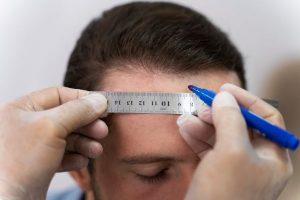Everything you need to know about the FUE extraction technique in hair transplantation

Hair transplantation is an increasingly popular solution for people suffering from hair loss. Among the different techniques used, FUE extraction technique (single follicular extraction) is one of the most advanced and promising. In this article, we will explore in detail the FUE extraction technique, how it works, its benefits and its results.
What is the FUE extraction technique?
FUE (Follicular Unit Extraction) technique is a surgical method of hair transplantation that involves removing individual hair follicles from the donor area (usually the occipital region of the head) and re-implanting them into the recipient area (the bald or sparse area). Unlike the strip harvesting technique (FUT), where a strip of scalp is removed, FUE allows follicles to be harvested one by one, leaving small circular scars that are usually less visible.
How does the FUE extraction technique work?
The FUE extraction technique begins with shaving the donor area to provide easier access to the hair follicles. Next, a special instrument called a punch is used to gently remove each follicle one by one. These follicles are then preserved in saline until the time of reimplantation.
Once enough follicles have been collected, the reimplantation process begins. The surgeon makes small incisions in the recipient area in a pre-established pattern for a natural appearance. The follicles are then inserted one by one into these incisions, taking into account the angle and direction of the existing hair for an optimal aesthetic result.
What are the advantages of the FUE extraction technique?
The FUE extraction technique has several advantages over other hair transplantation methods:
- No linear scar : Unlike the strip removal technique ( FUT ) which leaves a visible linear scar, FUE only leaves small circular scars which are generally not very visible, even with a short haircut.
- Faster Recovery : Since FUE does not require sutures or stitches, the recovery period is generally shorter compared to the strip harvesting technique. Patients can often return to normal activities within just a few days.
- Less postoperative discomfort : FUE is a less invasive procedure, which generally results in less postoperative discomfort for patients. Pain and discomfort are minimized, making the overall experience more pleasant.
- Natural results : Since follicles are re-implanted individually, the results obtained with FUE are often very natural. The hair grows in the same direction and with the same density as the surrounding hair, resulting in a harmonious and aesthetic appearance.
What are the expected results with the FUE extraction technique?
The results of the FUE extraction technique vary from patient to patient, but overall, this method significantly restores hair density and reduces baldness . The replanted hair follicles begin to grow naturally after a few months, and full hair growth can take up to a year. Once the hair has grown, it can be maintained and styled like normal hair without any restrictions.
It is important to note that the success of hair transplantation also depends on the quality and quantity of donor follicles available. A thorough examination and prior evaluation by a hair transplant professional is essential to determine whether FUE is the best option for a given patient.

In conclusion, the FUE extraction technique
In hair transplantation, the FUE extraction technique offers an advanced and promising solution for people suffering from hair loss. With its advantages such as no linear scar, faster recovery and natural results, FUE has become a popular and widely used method. If you are considering a hair transplant, consult a qualified professional for personalized advice and information specific to your situation.
Please note that this article provides general information and is not a substitute for medical advice.
________

Dr. Baykal Oymak is a highly esteemed transplant specialist hailing from Turkey, boasting an impressive 17-year tenure in the medical field. His professional journey commenced as a dermatologist at Bogazici Hospital in Istanbul, where he began to hone his expertise. Since then, Dr. Oymak has conducted a remarkable tally of approximately 14,000 triumphant hair transplant procedures within Turkey. Additionally, he holds specialization in PRP treatment and Mesotherapy, further solidifying his reputation as a versatile and accomplished practitioner in the realm of dermatology and transplantation. » SCHEDULE YOUR HAIR TRANSPLANT IN TURKEY HERE «
